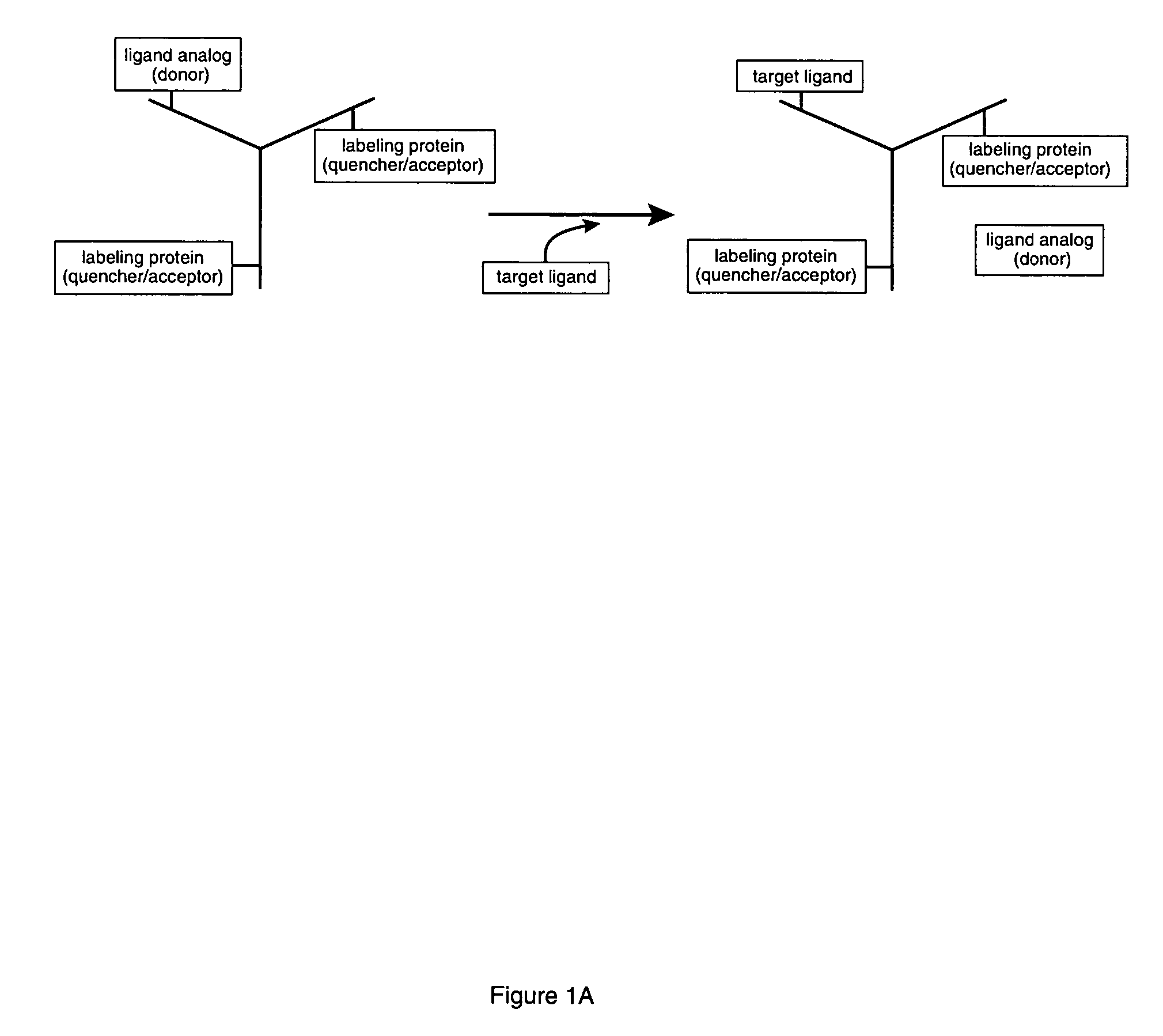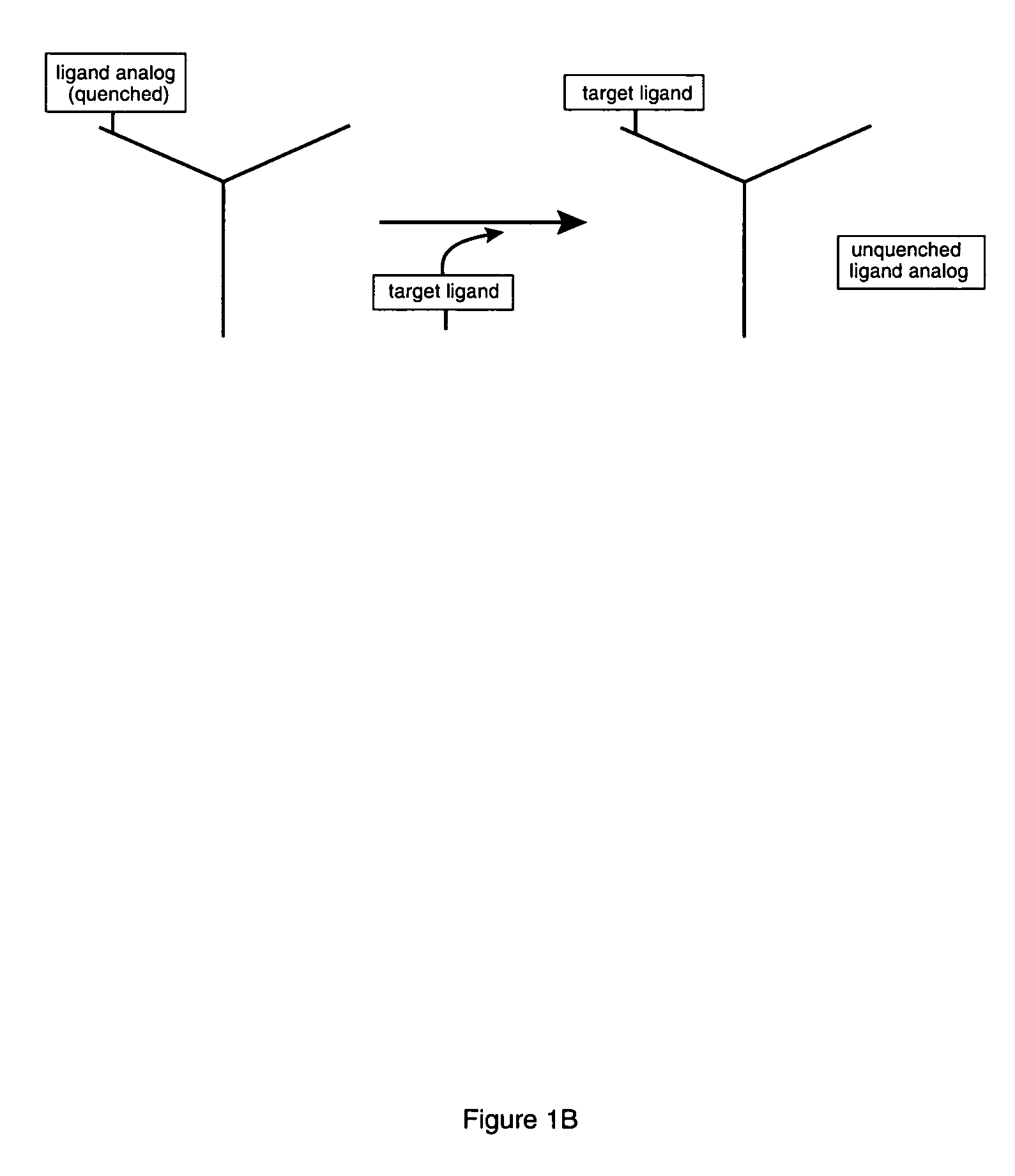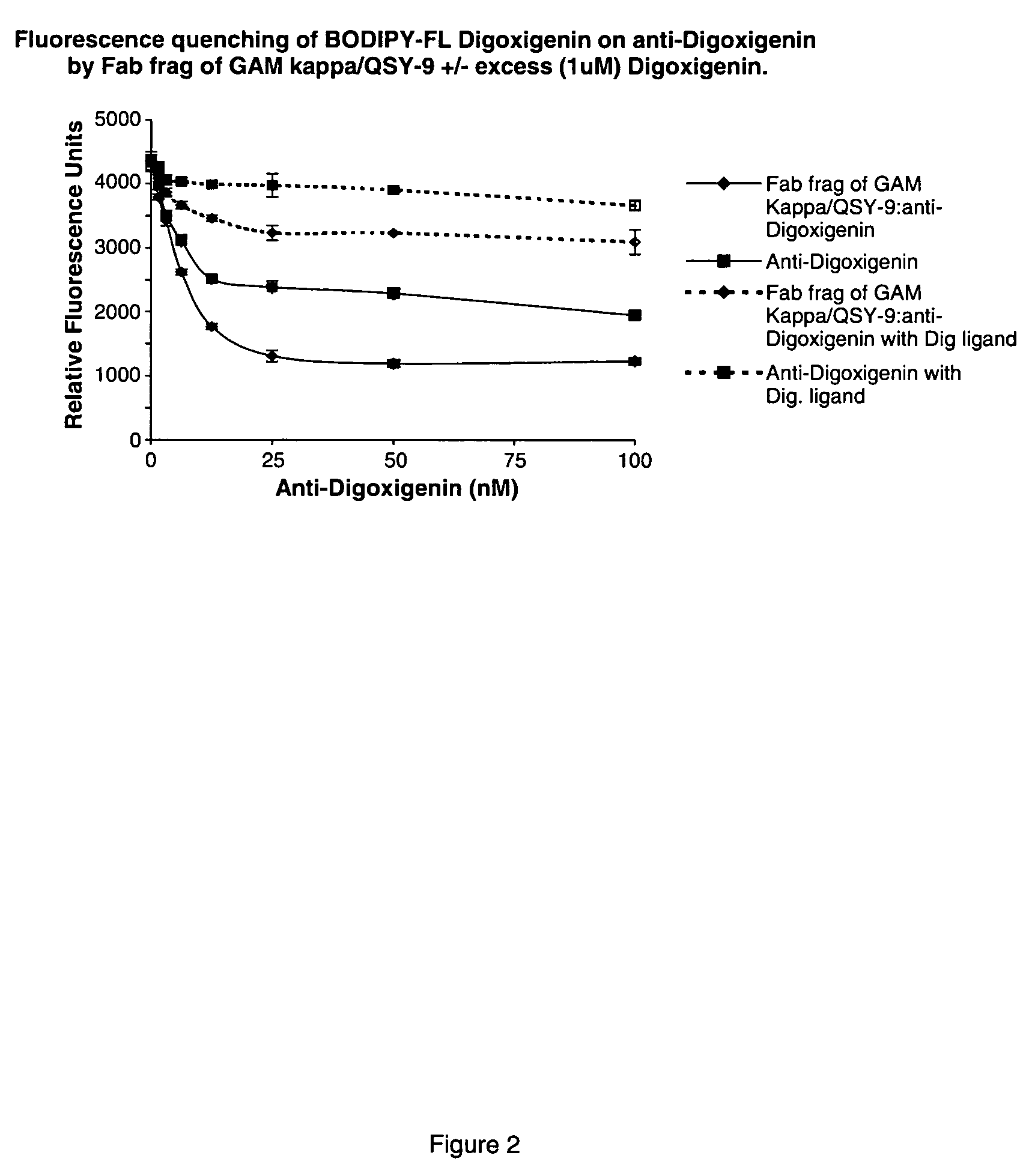Competitive immunoassay
a competitive immunoassay and reagent technology, applied in the field of ligand-binding reagents, can solve the problems of multiple steps and reagents, heterogeneous methods, and not widespread use, and achieve labeling that interferes with binding or a lower detectable signal than expected
- Summary
- Abstract
- Description
- Claims
- Application Information
AI Technical Summary
Benefits of technology
Problems solved by technology
Method used
Image
Examples
example 1
Synthesis of Phosphorylethanolamine Ligand Analog, Compound 2
[0178]To an orange solution of BODIPY FL succinimidyl ester (Molecular Probes 2184, 200 mg, 0.51 mmol) in 20 mL anhydrous tetrahydrofuran was added a solution of ethanolamine (36 μL, 0.6 mmol) in 1 mL dioxane. The resulting cloudy orange mixture was stirred at room temperature for 3 hours, and concentrated in vacuo. The residue was purified by flash chromatography on silica gel using 10% methanol in chloroform as eluant to give the corresponding ethanolamine amide of BODIPY FL as 0.17 g (99%) of an orange powder: 1H NMR (CD2Cl2) δ 7.19 (s, 1H), 6.97 (d, 1H), 6.34 (d, 1H), 6.20 (s, 1H), 6.08 (br s, 1H), 3.65 (t, 2H), 3.36 (m, 2H), 3.26 (t, 2H), 2.66 (t, 2H), 2.57 (s, 3H), 2.30 (s, 3H); LRMS m / z 335 (335 calcd for C16H20N3O2BF2).
[0179]
[0180]To a solution of BODIPY FL succinimidyl ester (Molecular Probes 2184, 50 mg, 0.13 mmol) in 5 mL dioxane was added a solution of O-phosphorylethanolamine (27 mg, 0.19 mmol) in 2 mL of 0.5 ...
example 2
Synthesis of Phosphotyramide Ligand Analog, Compound 4
[0182]To a solution of 4,4-difluoro-4-bora-3a,4a-diaza-s-indacene-3,5-dipropionic acid (Molecular Probes 6103, 0.10 g, 0.30 mmol) in 15 mL anhydrous THF under argon was added oxalyl chloride (78 μL, 0.89 mmol) and one drop of DMF. The volatiles were removed in vacuo after 15 minutes of stirring, leaving a residue of 4,4-difluoro-4-bora-3a,4a-diaza-s-indacene-3,5-dipropionyl chloride. This bis-acid chloride was dissolved in 15 mL anhydrous THF, and the resulting solution added dropwise to a solution of 4-aminophenol (98 mg, 0.90 mmol) and diisopropylethylamine (0.16 mL, 0.90 mmol) in 10 mL anhydrous THF with stirring. The resulting green-orange mixture was stirred at room temperature for 3 h and then quenched with 10% citric acid (75 mL). The resulting mixture was extracted with ethyl acetate (2×50 mL). The extract was washed with brine (1×), dried over sodium sulfate, and concentrated to an orange residue. Flash chromatography us...
example 3
Synthesis of a Fluorogenic Phosphotyramide Ligand Analog, Compound 5
[0186]A 0.05M solution of 4,4-difluoro-4-bora-3a,4a-diaza-s-indacene-3,5-dipropionyl chloride in anhydrous dioxane is added dropwise to a 0.1M solution of 2.5 eq O-phosphotyramine disodium salt in water (pH 8-9) with stirring. After stirring at room temperature overnight, the volatiles are removed in vacuo. The residue is purified by chromatography on Sephadex LH-20 using water as eluant to give Compound 5 as an orange powder.
[0187]
PUM
| Property | Measurement | Unit |
|---|---|---|
| molar ratio | aaaaa | aaaaa |
| molar ratio | aaaaa | aaaaa |
| molar ratio | aaaaa | aaaaa |
Abstract
Description
Claims
Application Information
 Login to View More
Login to View More - R&D
- Intellectual Property
- Life Sciences
- Materials
- Tech Scout
- Unparalleled Data Quality
- Higher Quality Content
- 60% Fewer Hallucinations
Browse by: Latest US Patents, China's latest patents, Technical Efficacy Thesaurus, Application Domain, Technology Topic, Popular Technical Reports.
© 2025 PatSnap. All rights reserved.Legal|Privacy policy|Modern Slavery Act Transparency Statement|Sitemap|About US| Contact US: help@patsnap.com



